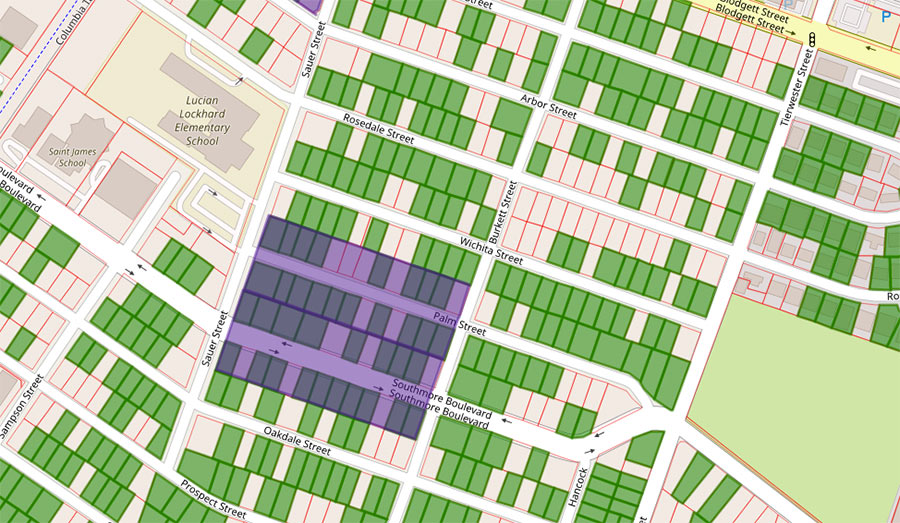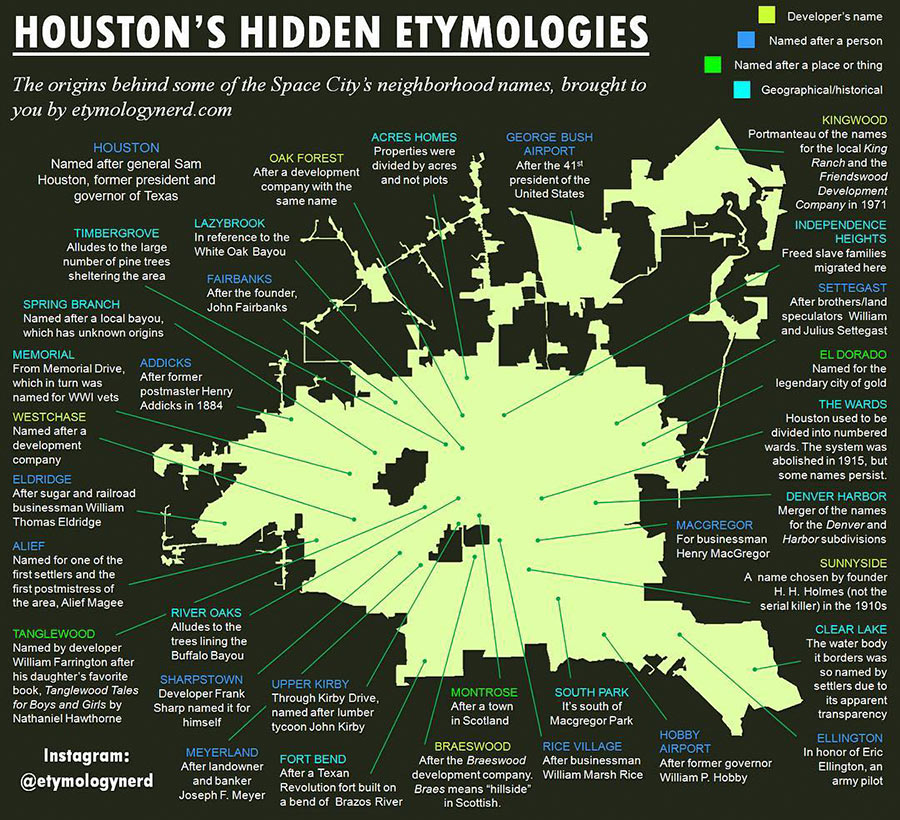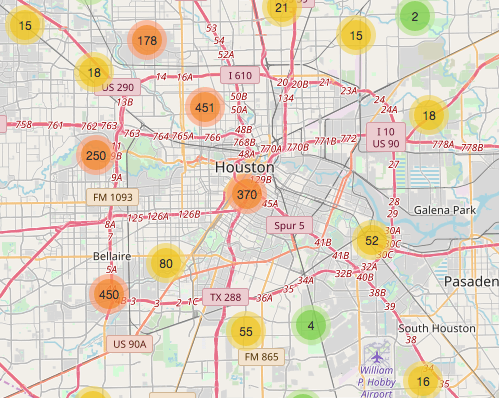THE RIGHT DOORS TO KNOCK ON WHEN PETITIONING FOR LOT SIZE RESTRICTIONS  This new map put out by civic-minded data miner Jeff Reichman shows only one thing: which Houston properties are owner-occupied according to HCAD data — they’re indicated in green. But Reichman is pitching it as a tool residents can use to figure out something more: how likely their neighborhoods would be to qualify for a minimum lot size restriction. Minimum lot size refers to the smallest square footage developers can chop lots into in order to cram more structures onto them — like, say, townhomes — than they could have previously. The Planning Commission requires neighborhood consensus in order to consider applications for size restrictions — in the form of a vote, but first in signatures from the owners of the lots in question. And to gather that ink, it’s helpful to know who’s home. The map at top (taken from a set of bigger ones showing entire neighborhoods) takes a look at several Third Ward blocks south of Blodgett St. that appear well-suited to the Planning Commission’s requirements because they have high rates of home ownership, and because their lots are already of similar size (70 percent of lots in a given area must be the same size for the Planning Commission to consider restrictions, which wouldn’t do much good if the properties’ dimensions were already inconsistent.) And look — the purple rectangle shows 2 block faces where restrictions are already in place, on Southmore Blvd. and on Palm between Sauer and Burkett. [January Advisors; more info] Map: January Advisors
This new map put out by civic-minded data miner Jeff Reichman shows only one thing: which Houston properties are owner-occupied according to HCAD data — they’re indicated in green. But Reichman is pitching it as a tool residents can use to figure out something more: how likely their neighborhoods would be to qualify for a minimum lot size restriction. Minimum lot size refers to the smallest square footage developers can chop lots into in order to cram more structures onto them — like, say, townhomes — than they could have previously. The Planning Commission requires neighborhood consensus in order to consider applications for size restrictions — in the form of a vote, but first in signatures from the owners of the lots in question. And to gather that ink, it’s helpful to know who’s home. The map at top (taken from a set of bigger ones showing entire neighborhoods) takes a look at several Third Ward blocks south of Blodgett St. that appear well-suited to the Planning Commission’s requirements because they have high rates of home ownership, and because their lots are already of similar size (70 percent of lots in a given area must be the same size for the Planning Commission to consider restrictions, which wouldn’t do much good if the properties’ dimensions were already inconsistent.) And look — the purple rectangle shows 2 block faces where restrictions are already in place, on Southmore Blvd. and on Palm between Sauer and Burkett. [January Advisors; more info] Map: January Advisors





The money the city pays for infrastructure (roads, sidewalks, water, sewer, drainage) scales pretty directly with street frontage. Which means that MLS blocks receive an indirect tax subsidy from their denser neighbors. A single-family house on a full-size lot might be taxed at $800k. That same lot with 6 townhouses on it might be taxed at $2.4M.
Infill development and gradual densification is vital to keeping the city on a sound financial footing, and the MLS process allows a select group of property owners to free ride on their neighbors. Part of the MLS process should require that the protected lots be taxed at the same per-acre rate as their denser neighbors (including improvements). If everyone’s property tax bill tripled, there would be a lot fewer of these applications.
These applications are done by block, not by neighborhood. I live in Southgate and we just went through this. The restriction is forever, too. No expiration. I was amazed.